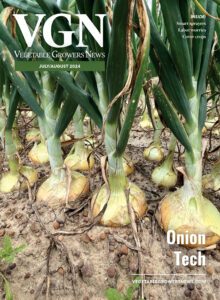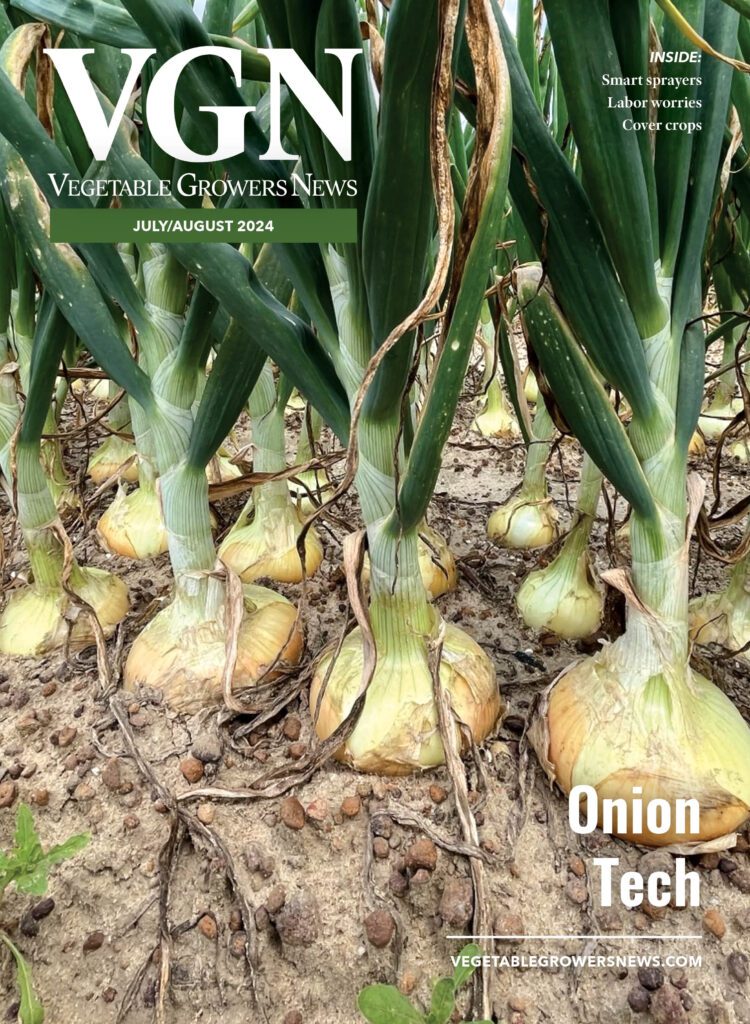Jul 6, 2022California melon crop ready for summer
As the Independence Day holiday approached, watermelon farmers were anticipating booming business.
“We’re encouraged because we like the way the crop looks, and it probably is going to be a steady crop,” said Joe Colace, a Brawley-based farmer with fields in the desert and in the San Joaquin Valley. “We don’t, at this point, see it bunching up anywhere, but that can change. You get three weeks out, that certainly could change if it got real hot or if it cooled down a lot.” Colace said his Los Banos-area fields were anticipated to begin harvest at the end of June.
Watermelon grower and handler Art Perry said melons from fields in Bakersfield, the Coachella Valley and elsewhere are of good quality, with Manteca-area fields now gearing up. “The fields are looking good,” he said.
“We cool down in the evenings,” Perry said from his Manteca headquarters. “When you cool down in the evenings, more sugar gets in that fruit, and it’s actually better-eating fruit.”
Bryan Van Groningen’s harvest crews have been hard at work on his melon fields outside Stockton, and so far, he’s pleased.
“I’d say our fields are producing a decent crop at this point in time,” Van Groningen said. “We’re harvesting as much as we can prior to the Fourth of July holiday.”
Van Groningen said harvest began June 20. He was aiming to have melons moving through his Manteca packing shed sooner than that, but cooler spring weather delayed his plans. “We had a few weeks there that really kind of set the maturity dates back a little bit,” Van Groningen said.
Colace said the majority of watermelon consumption is of 18- to 20-pound seedless varieties. If all goes well, he expects the Northern California harvest to go until mid-October.
Watermelon prices for the San Joaquin Valley crop are running ahead of last year’s pace, according to data from the U.S. Department of Agriculture Agricultural Marketing Service. As of June 30, a 35-count carton of valley seedless watermelons was selling for $150 to $154, while the 45-count carton went for $158 to $161. That’s up $119 to $126 from June 2021.
Seedless miniatures—”personal size,” as Van Groningen calls them—were going for $12.95 to $13.95 for cartons of six- to nine-count melons at the end of June 2022, according to USDA. Last year, the price was $8.95 to $10.95 per carton of six- to eight-count melons.
Van Groningen said oversupply was a factor in last year’s market, noting that 2021 was a lower-price, lower-volume year. Colace agreed that 2021″was a really challenging year.”
“It was overplanted, as it turned out; there was more supply than there was demand,” Colace said. “Currently, there is very good demand for watermelons.”
Colace said the watermelon market is better off with Independence Day being part of a long weekend.
“You’re going to have the three-day weekend,” he said, “and that gives families the opportunity to come together for larger celebrations.”
Perry said miniature watermelons may gain popularity over time because of cost.
“There’s definitely a certain clientele that will pick up the minis,” he said, but with the larger seedless melons, “that’s where you’re going to see the cut fruit in the stores … the trays, the cups, the halves, the quarters—that all adds up to a lot of usage of the big seedless.”
At the top of most melon growers’ minds is water. Colace calls the situation “very dire.”
“Everybody grows watermelons with drip irrigation, which is your most efficient application of water,” Colace said, noting that managing available supply takes effort .
“This is the first time that we really are going to witness restrictions, because the lower Colorado River basin really is at a critical low level,” he said. “The San Joaquin Valley has been dealing with this now for several years. Whenever the farmer has to wait for the winter outcome of snowpack (and) rain, it’s very difficult to make long-term plans.”
Acreage is increasingly influenced by how much water a farmer has, Colace said.
“We’re good this year,” he noted. “We have ample acreage planted, but we don’t know what that means for next year.”
Van Groningen said his fields use deep-well water, adding, “As far as the deep well goes, yeah, we have good supply.”
Perry said those with access to groundwater are pumping it, “but the cost of pumping has gone up, because electricity’s gone up.” Elsewhere depends on the seniority of a farmer’s water rights, he added.
“I think we’ll make it through as long as we have the rights to go along with the river, the riparian rights,” he said. “I think most of the land that’s planted in watermelons is safe for this year.”
As to next season, Perry said, “We do a lot of praying around here.”
Perry, part of a fourth-generation farming operation going back to 1925, said he likes to think his family grows, packs and ships “the two crops that children like the most” — watermelons and pumpkins.
“We’re pretty proud of that, that we’re actually handling a product that’s maybe the top two items that children enjoy,” Perry said. “We need enjoyment right now in our life. If we can make some children happy, or even families happy, with our products, it’s something to be proud of right now, because we need it.”
– Kevin Hectman, California Farm Bureau Federation















